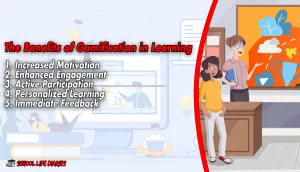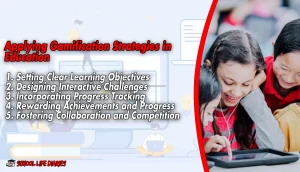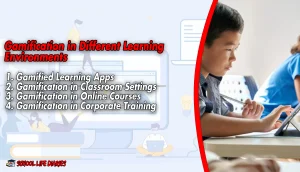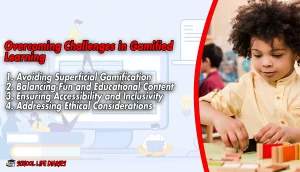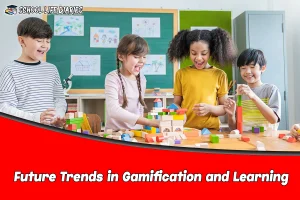Gamification has become a popular approach in the field of education, revolutionizing the way people learn and retain information. By integrating game elements into the learning process, educators are able to create engaging and effective experiences that enhance motivation, knowledge acquisition, and overall learning outcomes. In this article, we will explore the concept of gamification in learning, its benefits, and how it can be implemented to transform education for learners of all ages.
Gamification is the process of incorporating game elements and mechanics into non-game contexts, such as education. It aims to make learning more enjoyable, interactive, and immersive by leveraging the inherent motivational aspects of games. By integrating elements like points, badges, leaderboards, challenges, and rewards, gamification taps into learners’ natural inclination for competition, achievement, and mastery.
The Benefits of Gamification in Learning
Increased Motivation
Gamification ignites learners’ motivation by providing them with clear goals, challenges, and rewards. By turning the learning experience into a game-like adventure, students become more eager to participate actively and persist in their educational journey.
Enhanced Engagement
Gamified learning environments capture learners’ attention and keep them engaged throughout the process. Interactive elements and narratives create immersive experiences that make education enjoyable, resulting in increased focus and retention of information.
Active Participation
Through gamification, learners become active participants rather than passive recipients of information. They are encouraged to solve problems, make decisions, and apply their knowledge in practical scenarios, fostering critical thinking and problem-solving skills.
Personalized Learning
Gamification allows for personalized learning experiences by adapting to individual learners’ needs and preferences. By tracking progress and providing tailored feedback, it caters to different learning styles and paces, promoting a sense of autonomy and ownership over the learning process.
Immediate Feedback
One of the key advantages of gamification is the provision of immediate feedback. Learners receive instant responses and reinforcement based on their actions, allowing them to identify and correct their mistakes promptly. This real-time feedback loop enhances the learning experience and facilitates continuous improvement.
Applying Gamification Strategies in Education
To successfully implement gamification in education, educators can follow these strategies:
Setting Clear Learning Objectives
Clearly define the learning objectives to ensure alignment between the game elements and the desired educational outcomes. This helps maintain a balance between engagement and educational content.
Designing Interactive Challenges
Create interactive challenges that align with the learning objectives. These challenges should require learners to apply their knowledge and skills, promoting active learning and problem-solving.
Incorporating Progress Tracking
Include mechanisms to track learners’ progress throughout the gamified learning experience. Progress indicators, such as levels, badges, or experience points, provide a sense of accomplishment and encourage learners to strive for mastery.
Rewarding Achievements and Progress
Implement a reward system to recognize learners’ achievements and progress. Rewards can take various forms, including virtual badges, points, unlocking new content, or reaching higher levels, reinforcing positive behaviors and motivating continued engagement.
Fostering Collaboration and Competition
Integrate elements that foster collaboration and healthy competition among learners. Team-based challenges or leaderboards can encourage peer interaction, cooperation, and friendly rivalry, enhancing social learning and motivation.
Gamification in Different Learning Environments
Gamification can be applied in various learning environments, including:
Gamified Learning Apps
Mobile apps and platforms specifically designed for gamified learning experiences offer a wide range of subjects and interactive activities. These apps often incorporate game mechanics, progress tracking, and rewards to enhance the learning process.
Gamification in Classroom Settings
Educators can introduce gamification techniques in traditional classroom settings by incorporating game elements into lessons, quizzes, and group activities. This creates a dynamic and engaging learning environment that appeals to students’ interests and promotes active participation.
Gamification in Online Courses
Online learning platforms can leverage gamification to enhance the engagement and motivation of learners. By integrating game mechanics and interactive elements into the course structure, online courses become more interactive, enjoyable, and effective.
Gamification in Corporate Training
Gamification has proven to be beneficial in corporate training programs. By incorporating game elements into employee training modules, companies can enhance knowledge retention, improve employee engagement, and create a competitive learning environment.
Overcoming Challenges in Gamified Learning
While gamification offers significant advantages, educators need to be mindful of potential challenges:
Avoiding Superficial Gamification
Superficial gamification, where game elements are added without meaningful integration, can result in a shallow learning experience. It is crucial to ensure that the game mechanics align with the educational objectives and promote genuine learning.
Balancing Fun and Educational Content
Finding the right balance between fun and educational content is essential. While gamification should be engaging, it should not overshadow the learning objectives or compromise the educational value of the material.
Ensuring Accessibility and Inclusivity
When implementing gamification, it is essential to consider accessibility and inclusivity for learners with diverse needs. Game mechanics, instructions, and interfaces should be designed to accommodate different learning styles, abilities, and preferences.
Addressing Ethical Considerations
Gamification raises ethical considerations, such as potential addiction to rewards or the risk of exclusion for learners who struggle with gamified elements. Educators should ensure that the gamified approach is inclusive, fair, and aligned with ethical guidelines.
Future Trends in Gamification and Learning
The future of gamification in learning holds great potential. Advancements in technology, such as augmented reality (AR) and virtual reality (VR), will enable more immersive and realistic gamified learning experiences. Additionally, the integration of artificial intelligence (AI) can personalize gamification further, adapting to learners’ individual needs and providing tailored feedback.
FAQs:
1. How does gamification benefit learners?
Gamification benefits learners by increasing motivation, enhancing engagement, promoting active participation, facilitating personalized learning, and providing immediate feedback.
2. Can gamification be effective for all age groups?
Yes, gamification can be effective for learners of all age groups. It appeals to the natural inclination for competition, achievement, and mastery, making the learning process more enjoyable and effective.
3. Are there any downsides to using gamification in education?
While gamification offers significant advantages, potential downsides include superficial gamification, balancing fun and educational content, ensuring accessibility and inclusivity, and addressing ethical considerations.
4. What are some popular gamification platforms for learning?
Some popular gamification platforms for learning include Blooket, Classcraft, Kahoot, Duolingo, and Coursera.
5. How can educators measure the effectiveness of gamification in their teaching?
Educators can measure the effectiveness of gamification by analyzing learner engagement, performance metrics, completion rates, and feedback from learners. This data helps educators assess the impact of gamification on learning outcomes.
Conclusion:
Gamification in learning offers a powerful tool to transform education by engaging learners, enhancing motivation, and promoting active participation. By integrating game elements into the learning process, educators can create immersive and effective educational experiences that cater to diverse learners. As technology advances and new trends emerge, gamification will continue to shape the future of education, making learning more enjoyable, accessible, and impactful.


